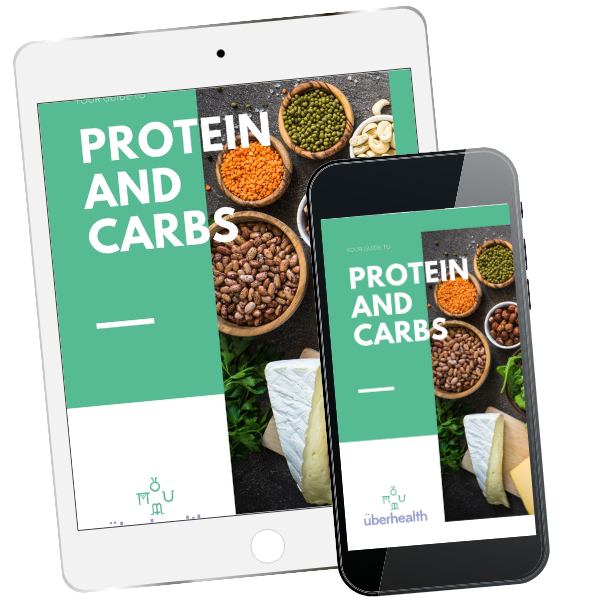Seasonal Eating: Maximizing Flavour and Nutrition Naturally

In today's busy world, the pursuit of a healthy diet can sometimes seem daunting, not to mention expensive. Yet, there's an approach to nutrition that not only promotes well-being but also helps you save money: Seasonal Eating.
Let's look into the world of seasonal eating and explore its numerous advantages.
What is Seasonal Eating?
Seasonal eating means enjoying foods that naturally flourish during the current season.
In the past, seasonal eating was the norm. But with advancements in technology and global food distribution, we can now access produce from around the world, even when it's out of season locally. But there's something special about choosing fresh foods from local farmers or markets.
At its core, seasonal eating is a simple and intuitive concept. It’s about consuming foods that naturally thrive during the current season. While this may sound like a return to simpler times, it is more relevant and beneficial today than ever before.
Why Choose Seasonal Foods?
Nutrient-Rich:
Seasonal foods are packed with nutrients tailored to the specific season. Consider the abundance of tropical fruits and hydrating salads during the scorching summer months. Their high water content helps keep you hydrated. In contrast, citrus fruits thrive in winter. They provide essential vitamins and antioxidants that support your immunity during the cold season.
Better Taste:
Ever tried a winter tomato? It often lacks the vibrant red hue and juiciness that summer tomatoes boast. Seasonal eating brings you produce at the peak of its flavour, untouched by long months in storage. For instance, apples are often stored for months to be sold year-round. But nothing quite matches the taste of an apple freshly picked from the tree. Seasonal foods taste better because they grow in ideal conditions.
Support Local:
Opting for seasonal foods often means supporting local growers and economies. It's a win-win for your health and your community.
How to Incorporate Seasonal Foods Into Your Diet:
Shop at Farmers Markets:
Visit local farmers' markets for fresh, seasonal produce. Farmers markets are treasure troves of seasonal options. The best part is that they often offer more affordable prices, even with organic or biodynamic produce.
Look for Affordable Options:
At the supermarket, seek out the budget-friendly produce displayed at the front of the section. These items are more likely to be in season and cost-effective.
Grow Your Own:
Start small with herbs or greens. Leafy veggies are perfect for balconies or sunny windowsills. Seek advice from your local nursery to get started.
What about cleanses and detoxes and the seasons?
Spring time and autumn (fall) are often a good time to do Cleanses and Detox’s.
Here are 4 reasons why:
1. Reset and Renewal:
Autumn and spring symbolize transitions and renewal in nature. Doing a cleanse during these seasons can mirror this process in your body. Allowing you to reset and rejuvenate after the harsh conditions of summer or winter.
2. Seasonal Eating:
Seasonal produce is more readily available during autumn and spring. Cleanses at these times can encourage the consumption of fresh, locally sourced fruits and vegetables. Therefore, providing your body with a variety of nutrients.
3. Boost Immunity:
As the weather changes, people are more susceptible to colds and illnesses. A cleanse can help support your immune system by providing essential vitamins and minerals. While also eliminating toxins that can weaken your body's defences.
4. Preparation for Upcoming Season:
Cleansing before the colder winter months or, the warmer summer months can prepare your body for the specific challenges each season brings. For example, a spring cleanse can help shed excess winter weight. Whilst an autumn cleanse can aid in strengthening your body before flu season.
What’s in Season in both Hemispheres?
Here is the list of what is currently in season in both the southern and northern hemispheres.
What’s in season in October – Southern Hemisphere (spring)
Fruit:
- Bananas
- Blueberries
- Carambola/starfruit
- Grapefruit
- Lemons
- Mangoes
- Oranges
- Passionfruit
- Pineapple
- Red papaya
- Rockmelon/cantaloupe
- Strawberries
- Tangelo
Vegetables:
- Artichokes
- Asparagus
- Beetroot
- Broccoli
- Cucumber
- Chillies
- Chinese greens
- Gai lan (Chinese broccoli)
- Garlic
- Green asparagus
- Green beans
- Hass avocados
- Kaffir lime leaves
- Lettuce
- Mushrooms
- Onions
- Peas
- Potatoes
- Silverbeet
- Spinach
- Spring onions/green shallots
- Zucchini
What’s in season in October in the Northern Hemisphere (autumn/fall)
Fruits:
- Apple
- Blackberries
- Cranberries
- Cherries
- Figs
- Grapes
- Nectarines
- Peaches
- Pears
- Plums
- Pomegranates
- Raspberries
Vegetables:
- Broccoli
- Brussel Sprouts
- Cabbage
- Cauliflower
- Corn
- Eggplant
- Parsnips
- Peppers
- Spinach
- Sweet Potatoes
- Tomatoes
- Winter Squash
Seasonal eating is not just a return to traditional practices; it's a path to healthier, more sustainable living. It connects us with the changing rhythms of nature. It enhances the flavour and nutritional value of your meals. It supports local communities. By embracing seasonal eating, you get to enjoy the unique tastes of each season. Nourish your body with the nutrients it craves. Contributing to the well-being of both your local economy and the planet.
FREE RESOURCE


